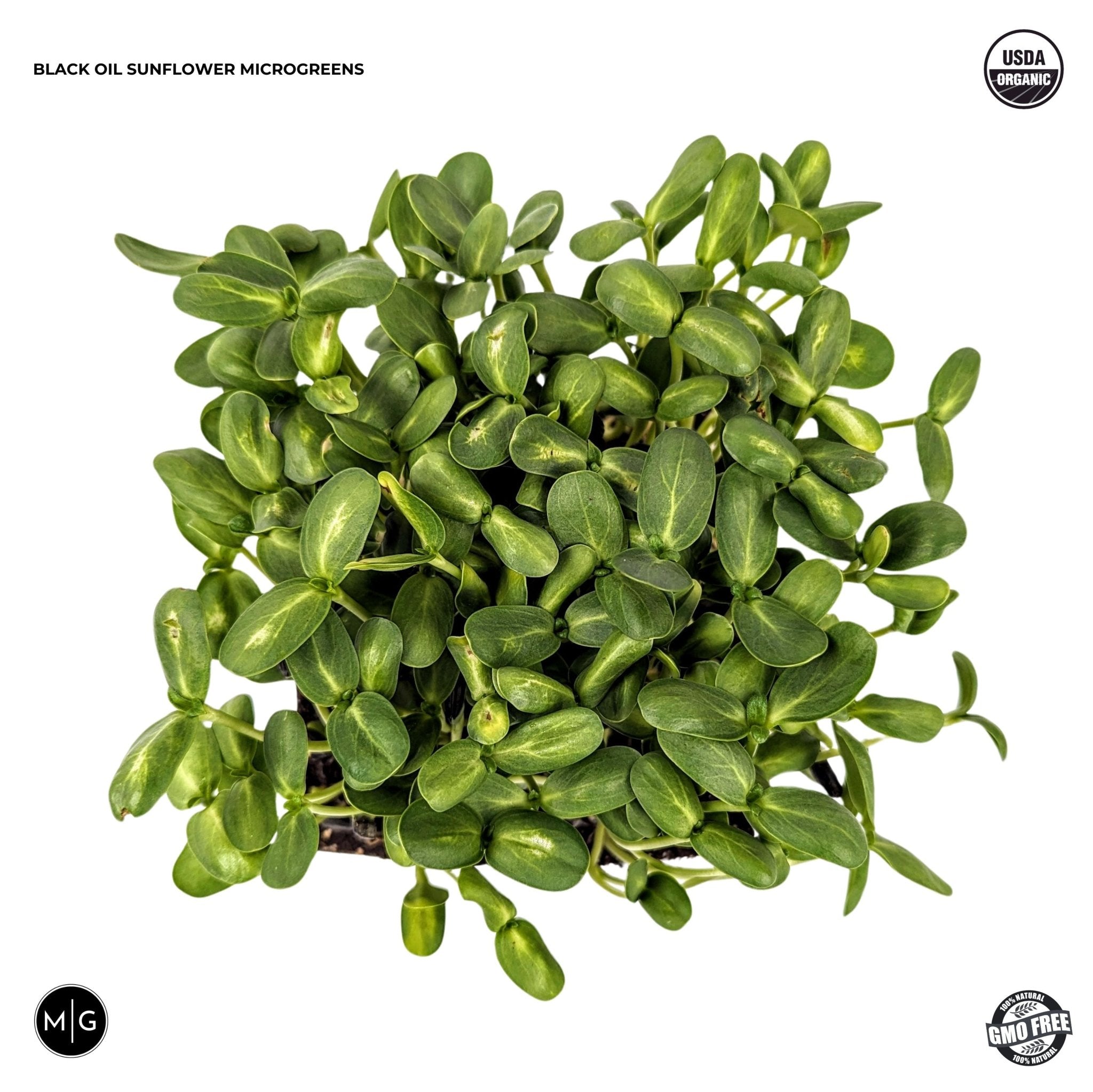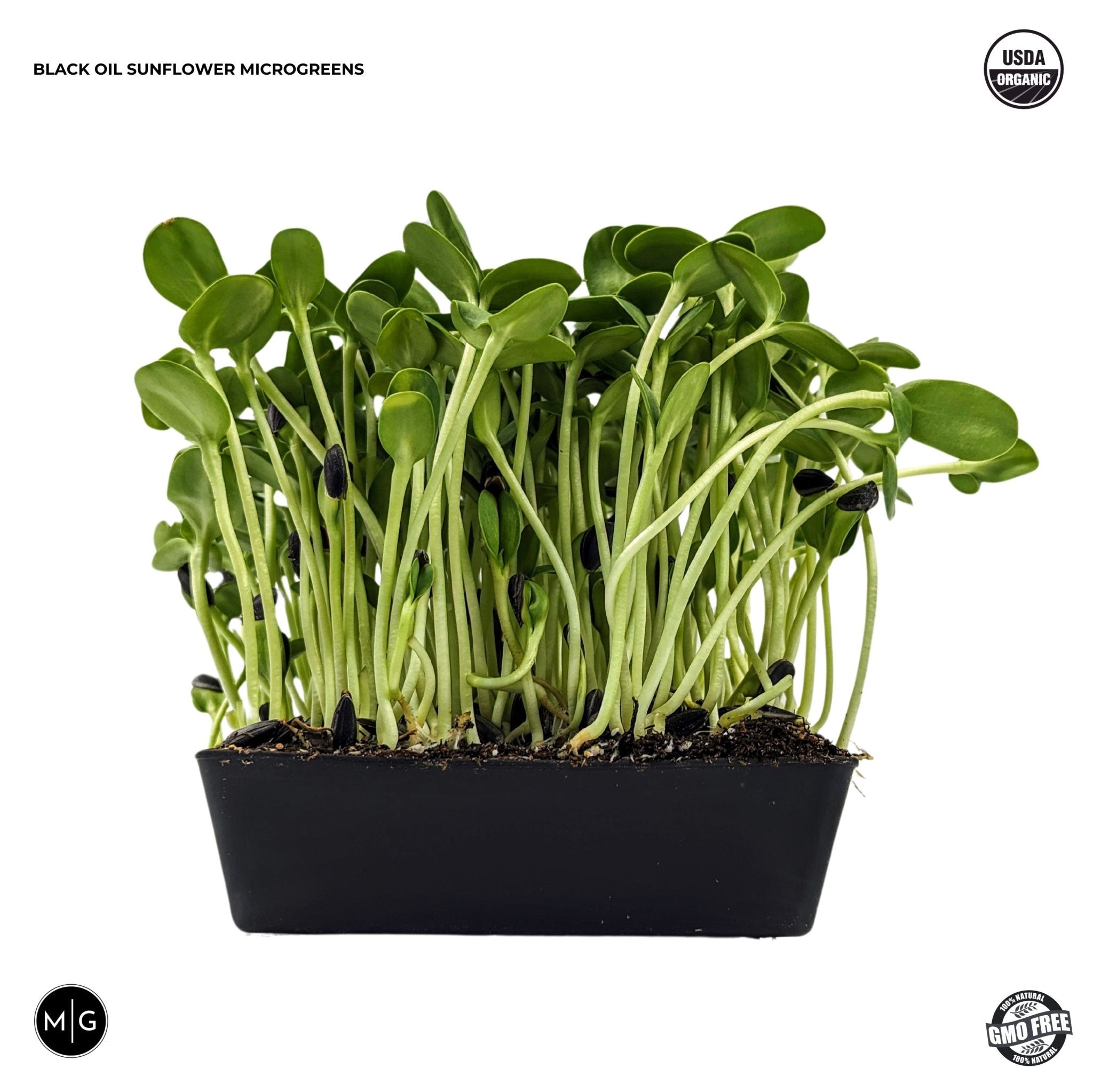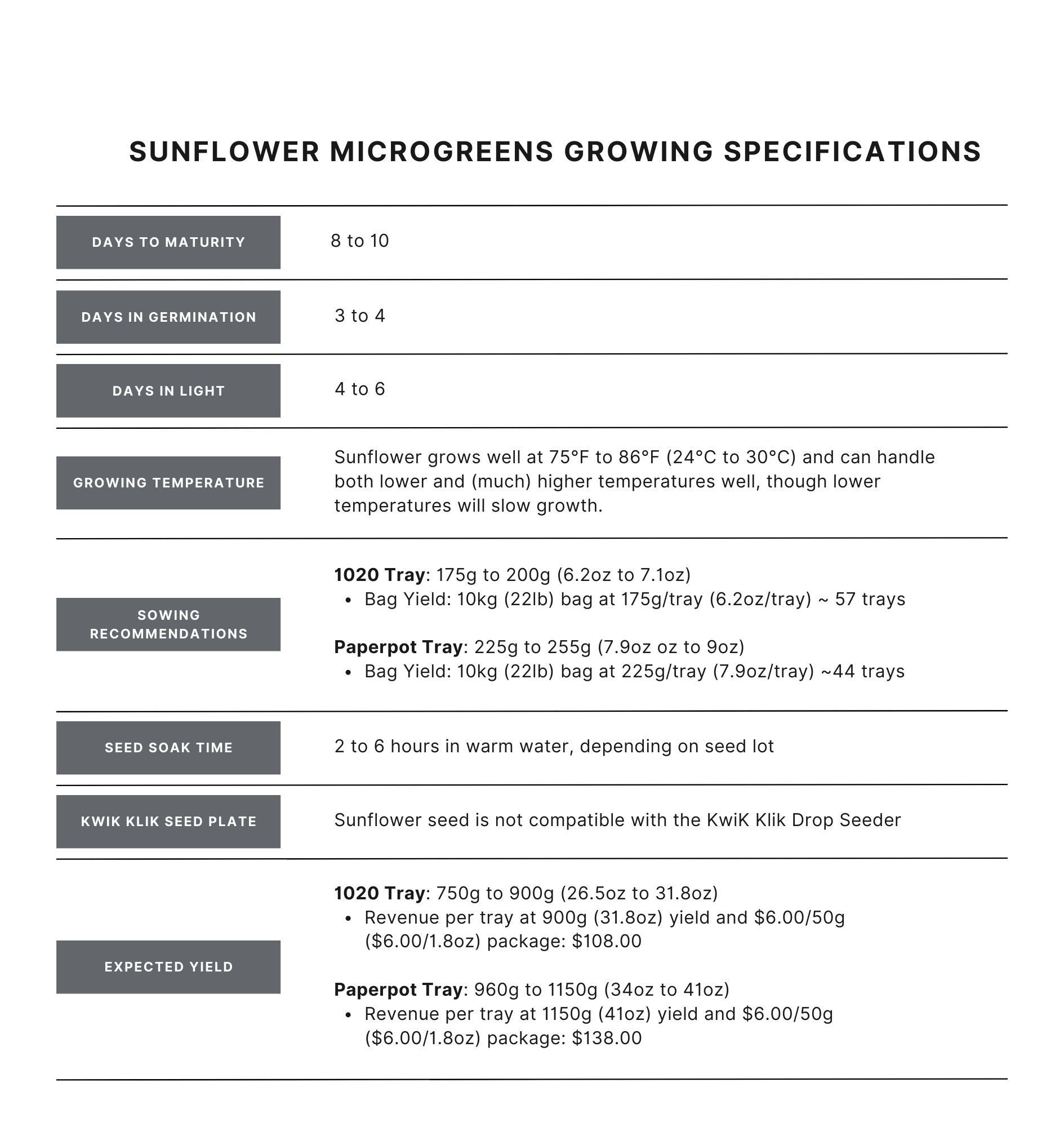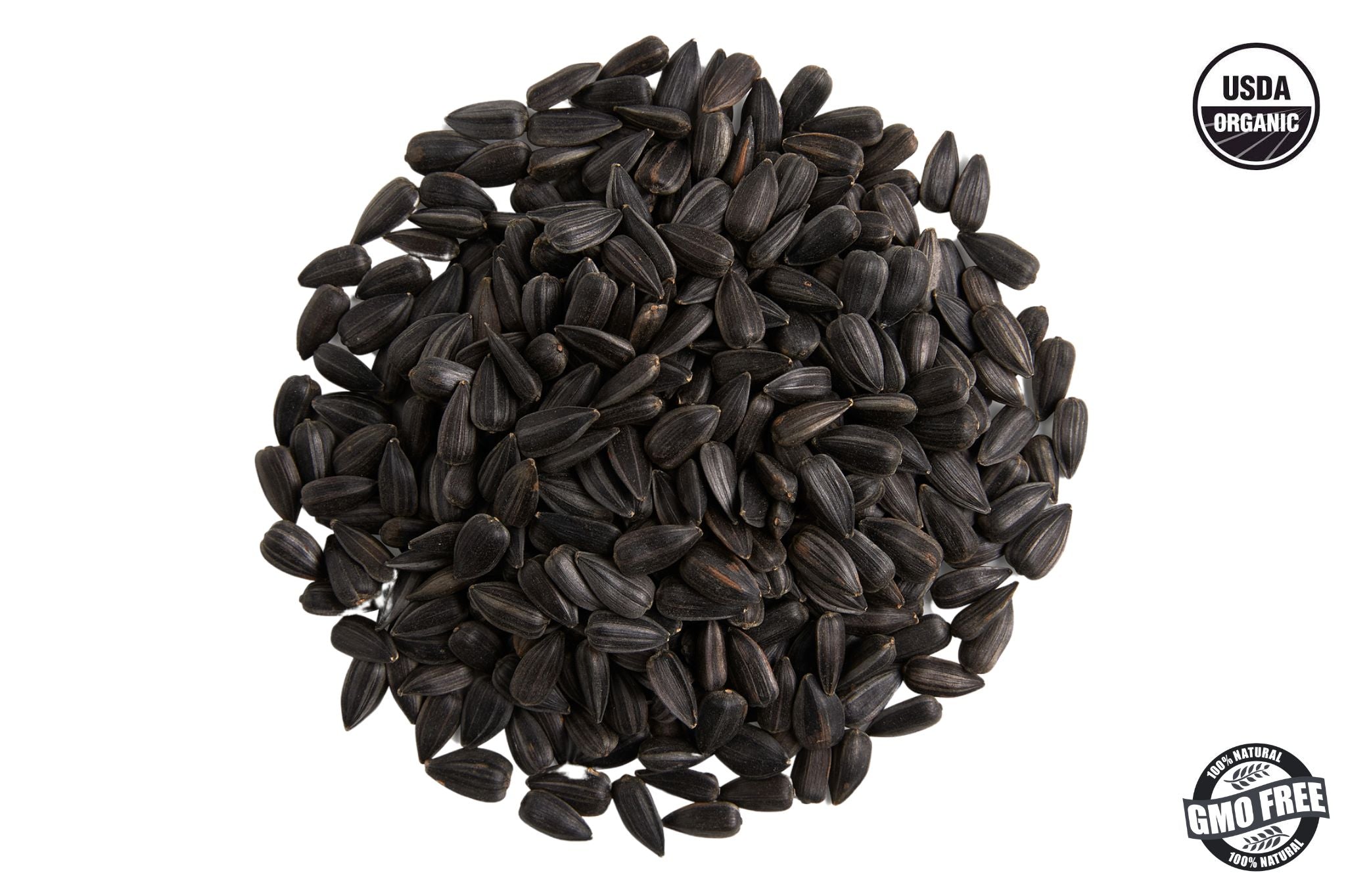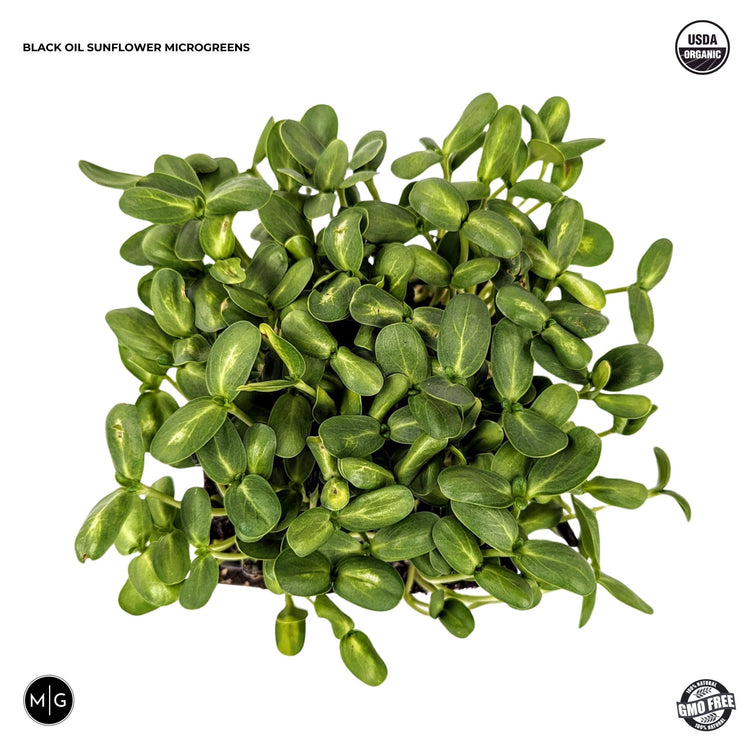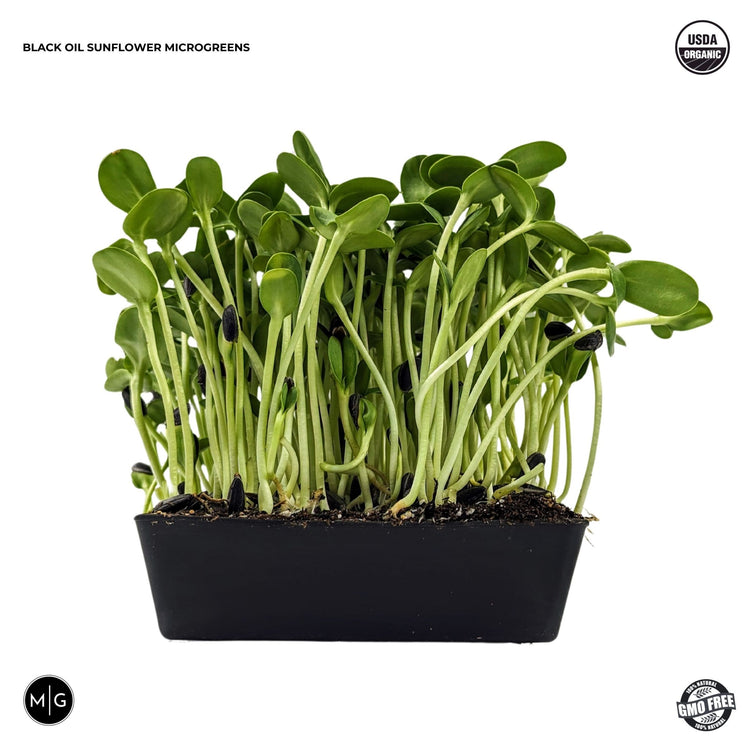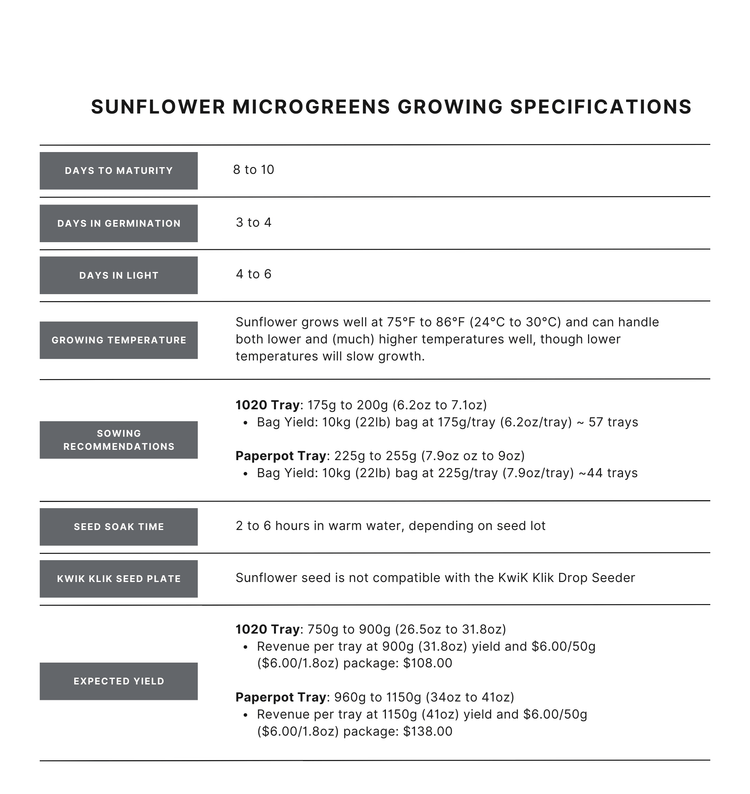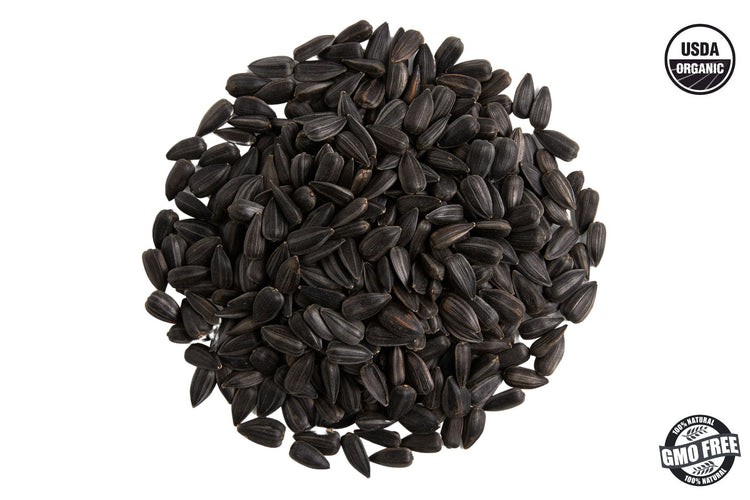- Days to Maturity: 8 to 10
- Days in Germination: 3 to 4
- Days in Light: 4 to 6
- Sunflower grows well at 75°F to 86°F (24°C to 30°C) and can handle lower temperatures well.
- 1020 tray: 175 to 200g per tray.
- Paperpot tray: 225 to 255g per tray.
- 2-6 hours in warm water, depending on seed lot
Crop Cycle:
Crop Temperature:
Sowing Recommendations:
Seed Soak Time:

